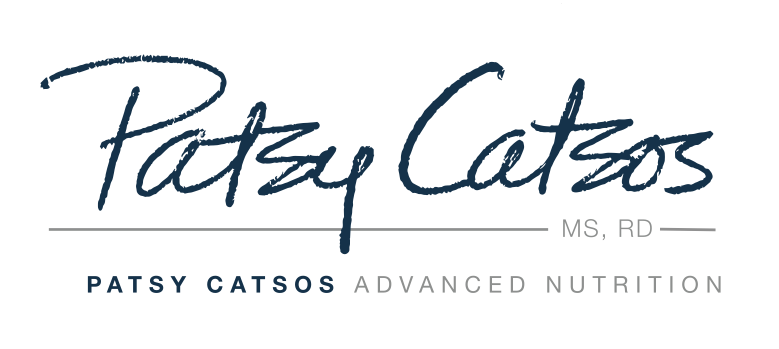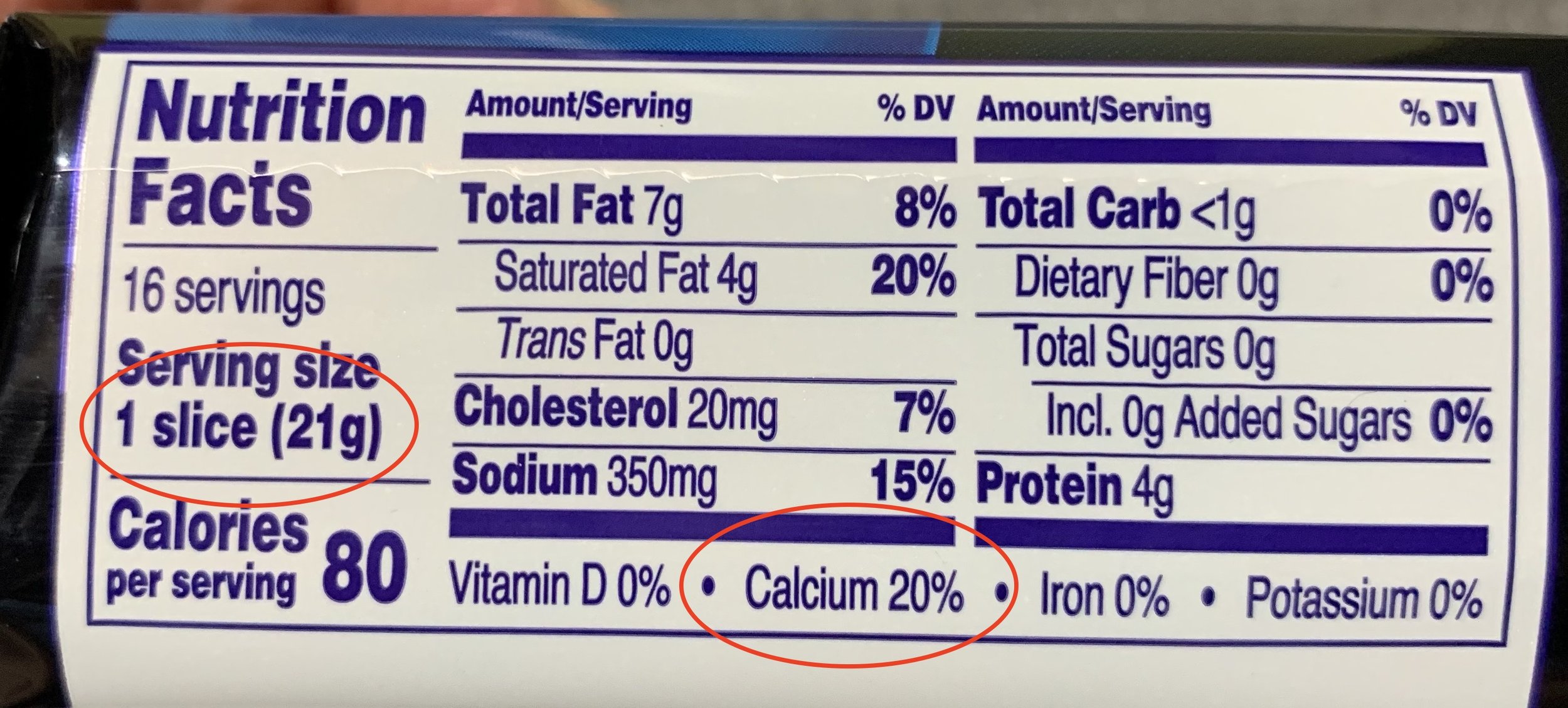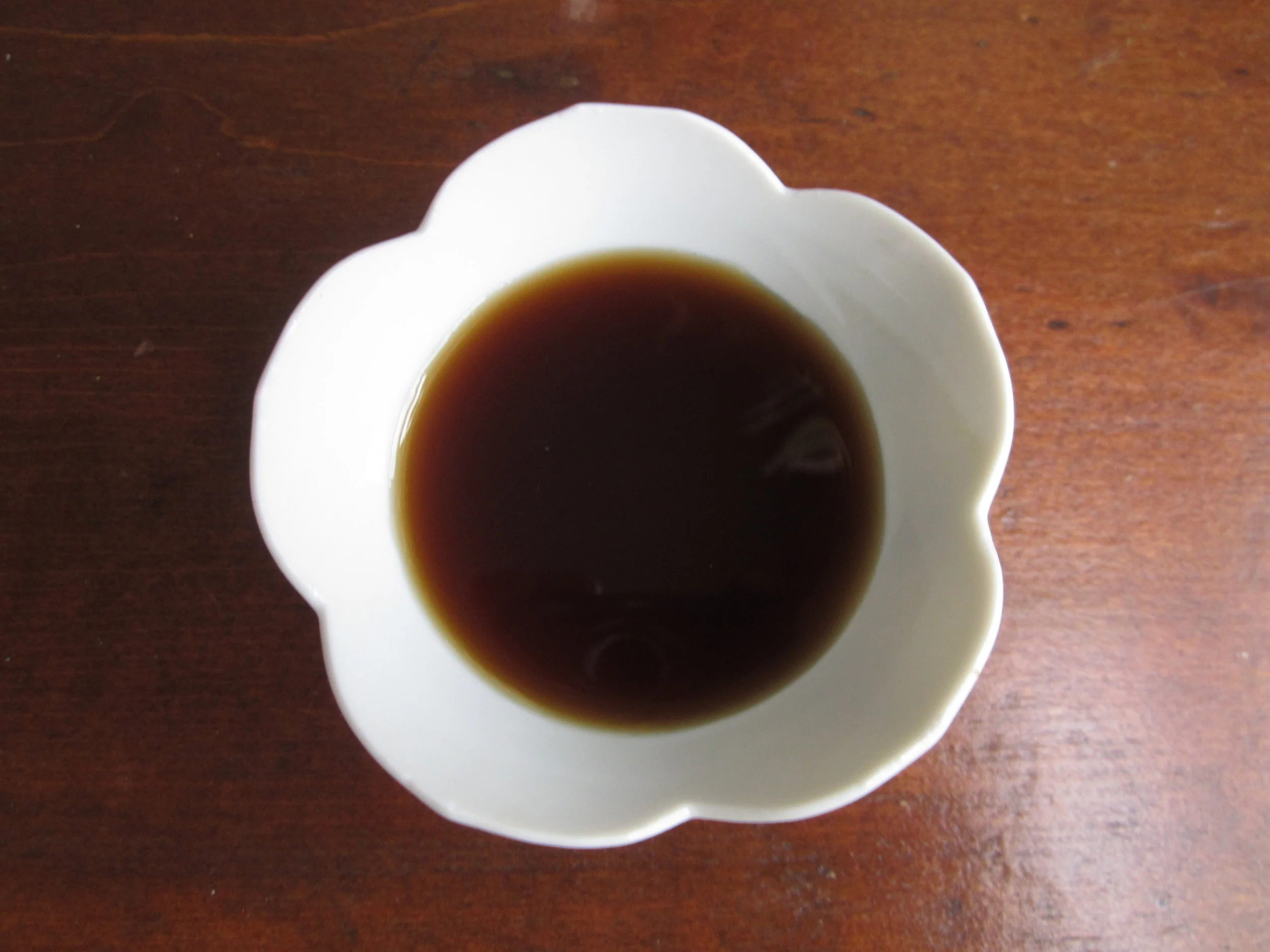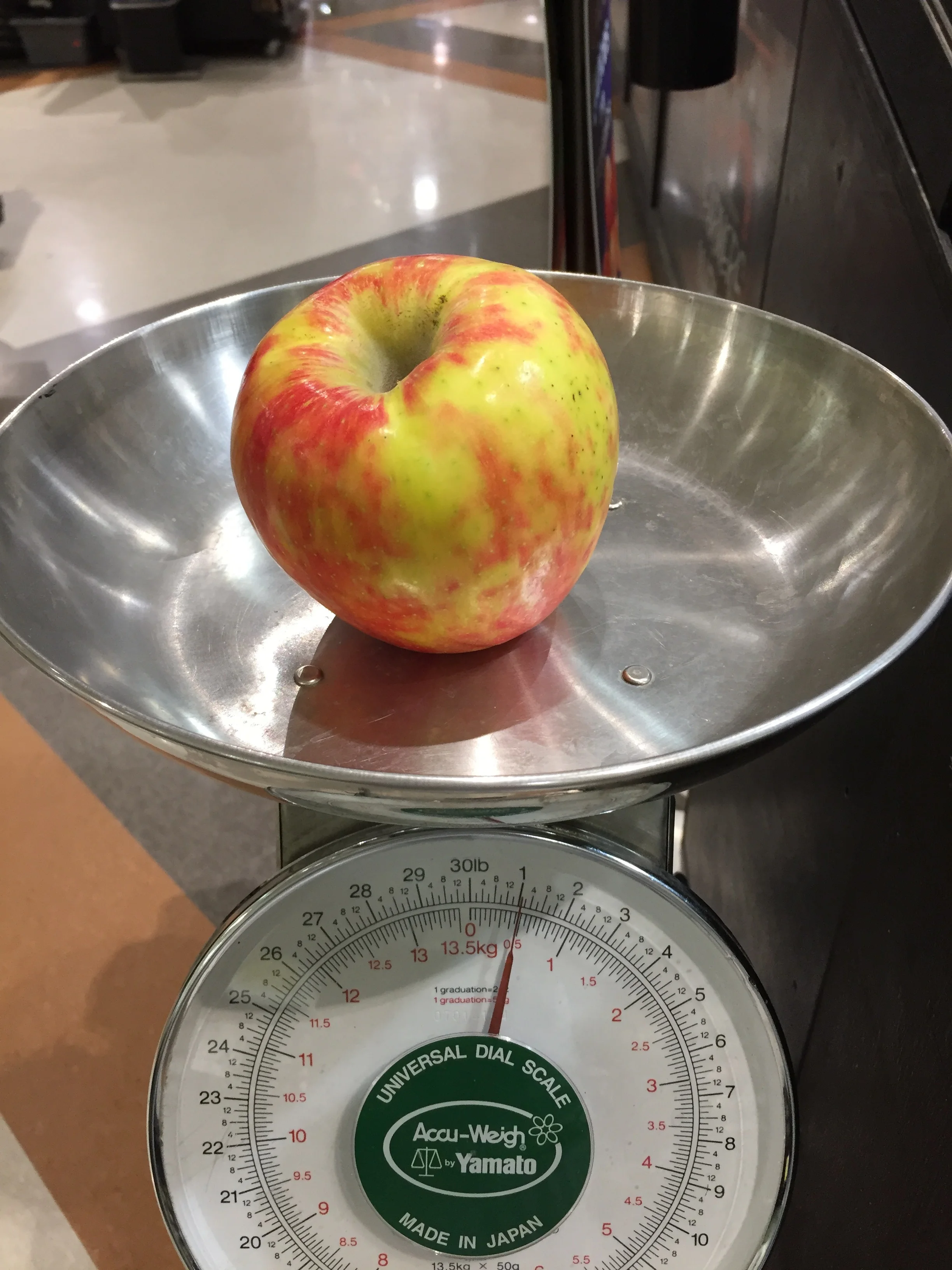Your low-FODMAP diet needn't be low in fiber. Here are some good fiber sources suitable for a FODMAP-elimination diet:
How can I get enough calcium on a low FODMAP diet?
Q. How can I get enough calcium on a Low FODMAP diet? I am concerned about my bone health.
A. There are plenty of good sources of calcium on a low-FODMAP diet if you consume dairy products. If you avoid dairy for some non-FODMAP reason, you may not be able to achieve the recommended level of calcium intake without a supplement.
Calcium ReQuirements
Calcium is a mineral, and an essential building block for strong bones. Most of the calcium in your body is stored in your bones. Calcium also circulate in your blood, where it plays critical roles in muscle contraction, nerve signaling and blood clotting. The calcium level in your blood must therefore be very stable. Calcium is drawn from your bones when there isn’t enough calcium in your diet to maintain normal blood levels. Bone is living tissue that is continually being broken down and built back up. Osteoporosis occurs when the creation of new bone tissue doesn’t keep up with the loss of old bone. The bone mineral density of osteoporotic bones is low. Osteopenia is an early sign or stage of osteoporosis.
Your calcium needs depend on your age and sex. In the U.S. and Canada, recommended intakes are the same whether your bone density is normal or in the osteopenic or osteoporotic range. Adults up to age 50 should consume 1000 milligrams (mg) of calcium per day from a combination of food and supplements. Recommended intakes increase to 1200mg at age 51 for women and at age 70 for men. (Pre-teens and teenagers need more calcium, 1300mg per day.) Health authorities in some countries set lower targets for calcium intake. In the U.K, guidelines recommend intake of 700mg for most adults (1000mg for people on osteoporosis drug treatment), which might give you some comfort if you’re not able to achieve a higher intake.
What if I Don’t eat dairy? Can't I get the nutrients I need from other foods?
There is little chance of getting 1200mg of calcium per day from non-dairy foods unless you are committed to eating 1-3 servings of tofu daily along with small bone-in fish, tiny shell-on shrimps, and loads of greens, as many do in traditional Asian diets. Two full cups of fortified almond or rice milk every day would go a long way toward meeting your needs, but who does that? Most people choosing a dairy-free diet will need calcium supplements to meet their needs.
Good Low FODMAP Calcium sources
These foods are among the strongest sources of calcium in the low-FODMAP serving sizes suggested in the Monash FODMAP Diet App:
Firm tofu, as opposed to silken tofu, is a source of calcium because it is made with the naturally occurring coagulant calcium sulfate.
Lactose-free milk (300mg), lactose-free yogurt (180-290mg), lactose-free kefir (325mg), Cheddar cheese (300mg). sardines (400mg), calcium-fortified almond or rice milk (300-450mg), tofu (500mg), canned salmon, with bones (240mg), chia seeds (150mg), bok choi (75mg), corn tortillas (150mg), and sourdough bread (66mg).
The calcium from most other low FODMAP foods just doesn’t add up very fast. This can be due to the limited serving sizes, or because they just aren’t as rich in calcium as you may think. For example, the low-FODMAP serving size of kale, 1/2 cup raw, contributes just 12mg of calcium. Three-fourths (3/4) cup of broccoli has 30mg of calcium, one tenth the amount in a serving of yogurt. Low FODMAP servings of canned legumes (20mg) or almonds (30mg) are other minor contributors.
Label reading for calcium
The Daily Value (DV) for calcium is 1300mg. One serving of this food contains 20% of the DV, or 260mg (.20×1300=260).
Sometimes the Nutrition Facts panel spells out the amount of calcium in a serving of packaged food. In other cases you have to calculate it yourself, especially on small packages of food with limited space for details. Pay close attention to the serving size shown vs. the amount you actually eat or drink, and do the necessary math to calculate your intake. For example, a cup of lactose-free milk might well contain 300mg of calcium, but if you only put 1/8 cup of milk in your tea, you’ll be getting 37.5mg. (300÷8=37.5).
The target amount of nutrients used as a reference on Nutrition Fact panels is called the Daily Value, or DV. Why is the DV for calcium 1300mg? The DVs are not specific to any one age or gender. In this case, the reference amount of calcium selected for use as the DV was the higher amount recommended for older children and teens, rather than the 1000mg or 1200mg for adults.
Some foods don’t have Nutrition Facts panels, such as fresh fruits and vegetables. Sometimes you get lucky, and Google will present good quality data prominently on the page when it returns results for queries such as “how much calcium is in cheddar cheese”—look for the tag that says “Sources include: USDA”. If you have to dig deeper, look up the calcium content foods at USDA FoodData Central.
Estimate how much calcium you usually get from your diet. If you are short of the amount recommended for your age and sex, choose some of the good calcium sources suggested above to increase your intake on a consistent basis. Dairy products are ideal, because they come along with other nutrients, like protein, that are just as important for building bones, so choose them if you can. The best and most practical sources of calcium are foods that you could imagine yourself consuming every single day, such as adding one serving of lactose-free yogurt to your daily lunchbox.
Calcium Supplements
Not everyone has the option of getting calcium from milk products. If you can’t find a way to meet your calcium needs with food, ask the doctor who is treating your low bone density if you should make up the difference with a supplement. Practice guidelines for managing osteopenia and osteoporosis favor supplementation if, and only if, needed, but individuals with certain medical conditions shouldn’t take them without close medical supervision.
In all honesty, there are some unsettled questions about whether high-dose calcium supplements may be linked to heart disease or prostate cancer. You should balance these concerns against the real and present danger: you actually have a bone density problem right now, and you don’t want it to get worse. Until more is known about the possible risks, be conservative; avoid excess intake of calcium from supplements. Don’t supplement with calcium beyond your needs unless specifically prescribed by your provider. Many people find that a calcium supplement of around 400-500mg of calcium per day, together with some calcium from food, is enough.
To maximize absorption, take calcium supplements in divided doses, and choose a product that includes vitamin D. I usually recommend calcium citrate, because that form of calcium is well tolerated, can be taken with or without food, interacts with fewer medications, and is reasonably priced. It sometimes comes in “minis” or “petites” that make it easy to take 200mg twice daily. Calcium carbonate may seem attractive because it is cheaper, but some people find it causes bloating and constipation. (For this reason, don’t overdo Tums if you have IBS, because the main ingredient in Tums is calcium carbonate.) Ask your pharmacist if the calcium supplement you are considering will interact with any of your prescribed medications and when to take it to minimize interactions.
The information in the article is for educational purposes. If you need advice on your specific needs and how to meet them, consult the provider who is managing your bone health.
Further reading:
Calcium Fact Sheet for Consumers, National Institutes of Health Office of Dietary Supplements. Seen at: https://ods.od.nih.gov/pdf/factsheets/calcium-consumer.pdf Jan 16, 2025.
Morin SN, Feldman S, Funnell L, Giangregorio L, Kim S, McDonald-Blumer H, Santesso N, Ridout R, Ward W, Ashe MC, Bardai Z, Bartley J, Binkley N, Burrell S, Butt D, Cadarette SM, Cheung AM, Chilibeck P, Dunn S, Falk J, Frame H, Gittings W, Hayes K, Holmes C, Ioannidis G, Jaglal SB, Josse R, Khan AA, McIntyre V, Nash L, Negm A, Papaioannou A, Ponzano M, Rodrigues IB, Thabane L, Thomas CA, Tile L, Wark JD; Osteoporosis Canada 2023 Guideline Update Group. Clinical practice guideline for management of osteoporosis and fracture prevention in Canada: 2023 update. CMAJ. 2023 Oct 10;195(39):E1333-E1348. doi: 10.1503/cmaj.221647. PMID: 37816527; PMCID: PMC10610956, seen at https://pmc.ncbi.nlm.nih.gov/articles/PMC10610956/ Jan 16, 2025.
Protecting Bone Health Among Vegans, S Palmer, Today’s Dietitian 18 (2): 24, seen at https://www.todaysdietitian.com/newarchives/0216p24.shtml Jan 16, 2025.
This page may contain affiliate links. We are a participant in the Amazon Services LLC Associates Program, an affiliate advertising program designed to provide a means for us to earn fees by linking to Amazon.com and affiliated sites.
FODMAPs and Protein Powders
Is date sugar low FODMAP?
Q. Is date sugar low FODMAP? If so, in what quantities? I know dates are not, but I’ve seen conflicting information from low-FODMAP sources I usually trust and it’s not on the MONASH app.
A. The short answer: as of this writing, we can only guess about the FODMAP status of date sugar. It probably has a small low FODMAP serving size, less than 2 tablespoons.
Is date sugar low FODMAP?
Date sugar is made from ripe, pitted dates that are dried to a very low moisture content and ground into a powder. Dates are the fruits from certain types of palm trees. But date sugar is not the same as palm sugar, which is made from the sap of palm trees. The Monash University FODMAP lab has analyzed “dried dates” in general, and one specific variety (Medjool), but not date sugar, the packaged sweetener.
We see in the Monash University Low FODMAP app that somewhere between 1 and 5 dates, or .71 oz to 1.06 oz of dates are low FODMAP. It’s difficult to guess how this information equates to date sugar.
Dates vary in nutritional composition
There are hundreds of varieties of dates grown around the world. In Saudi Arabia alone, there are over 300 varieties of dates grown, and they vary significantly in sugar and moisture content. Other countries and regions have their own unique varieties of dates. The variety of date used isn’t usually specified by the manufacturers of date sugar, but the moist varieties meant for snacking on are not likely to be among them. Therefore, It isn’t likely that date sugar has the same FODMAP content as the dates that were analyzed for FODMAPs at Monash.
Serving size estimates
We don’t know how much moisture is lost, or how much the ground dates “fluff up” in the making of date sugar. So if we said, for the sake of argument, that the type of sugar was similar to the dates in the app, we would have to figure many teaspoons or tablespoons of date sugar would equal the amount of FODMAPs in 1 pitted date. My calculations suggest that 2 tablespoons of date sugar has about the same amount of total sugar as one Medjool date.
Effects of ripening and drying
Adding more uncertainty, the final stages of ripening and drying of foods can alter their FODMAP content in unpredictable ways (check out the difference between grapes and raisins, or rice and puffed rice). As dates ripen, much of the sucrose content is “inverted”, or broken down to glucose plus fructose. Does that continue or change during the further drying of dates for grinding? It’s anyone’s guess. To be on the safe side, my guess will be conservative. Pending actual lab analysis of date sugar, less than 2 tablespoons might be low in FODMAPs. Larger servings might be a significant source of sorbitol and fructans.
Conclusion
Like many foods, dried dates can actually be low, medium, or high in FODMAPs depending on the serving size. Dates meant for eating have been lab tested, but date sugar has not. If you’d like to bake with date sugar on your low FODMAP diet, my advice is to make sure there’s less than 2 tablespoons in your portion of the recipe.
Further reading:
AlShwyeh H, Almahasheer H. Glucose content of 35 Saudi Arabian date fruits (phoenix dactylifera L.), Journal of the Saudi Society of Agricultural Sciences 21 (2022) 420-424. Seen at: https://www.sciencedirect.com/science/article/pii/S1658077X21001545
What Spices Can I Use on a Low FODMAP Diet
Q. What spices can I use on a low FODMAP diet?
A. The short answer if that most herbs, spices, and flavorings can be used on a low FODMAP diet. Don’t worry about spices, except those containing onion or garlic.
Determining the FODMAP Status
Information about the FODMAP content of herbs, spices, and flavorings comes from the FODMAP lab at Monash University. Because they know it’s a tall order to make food without onions or garlic, the Monash team has invested a lot of effort into testing herbs and spices from around the world. Several samples of each individual item are collected, pooled together, and freeze-dried, then tested with specialized laboratory equipment. The results are translated into the Monash University Low FODMAP app where low FODMAP servings are labeled with a green light. You will find that some herbs or spices can be low, medium, or high FODMAP depending on the serving size.
The Alliums
Bulbs of onions, garlic, and shallots are high in FODMAPs.
Onions, garlic, and shallots, members of the allium family, are especially significant sources of FODMAPs. There are no low-FODMAP serving sizes for most of them. It doesn’t matter how little you use! Even onion and garlic powder or flakes should be eliminated on a low-FODMAP diet. Leek bulbs are the exception. They do have a low-FODMAP portion size of 1 tablespoon. Beware of spice blends, which often include onion and garlic pieces or powders.
Ordinary cooking and baking
In the amounts used in the United States for everyday cooking and baking, that vast majority of herbs, spice, and flavorings are low-FODMAP or have low-FODMAP serving sizes. A few herbs or spices are used in larger amounts. Even then, your individual portion of the recipe is unlikely to contain more than a teaspoon of cinnamon, cumin, or chile powder, the typical low-FODMAP serving size for such things. If you cook with or eat entire chile peppers, check the app for details on low-FODMAP serving sizes.
Other flavorings
Fresh lemon juice, fresh lime juice, and most vinegars are also low-FODMAP when used in ordinary amounts (balsamic vinegar has a limited low FODMAP portion). They can add so much lively flavor to your recipes! The green parts of scallions, leeks and garlic (scapes) are low in FODMAPs, too. Prepared condiment should be considred on a case-by-case basis. Most soy sauces, tamari, prepared mustards, and certain vinegar-chile hot sauces don’t have high FODMAP ingredients. But many other condiments and salad dressings do contain onion, garlic, or high-fructose corn syrup so read labels carefully. Choose brands that don’t have high FODMAP ingredients or those that have been lab-tested to check their FODMAP status. Several brands of low-FODMAP specialty foods are available, with seasoning blends, salsas, and sauces that add lots of flavor to you low-FODMAP diet.
Medicinal use
If you are taking large amounts of an herb or spice for some medicinal purpose, you will have to pay more attention to the limits on the low FODMAP serving sizes. Please refer to the Monash University FODMAP Diet app for specific limits.
Shop for low-FODMAP groceries here.
This page may contain affiliate links. We are a participant in the Amazon Services LLC Associates Program, an affiliate advertising program designed to provide a means for us to earn fees by linking to Amazon.com and affiliated sites.
FODMAPs for Vegans
Update: Sweeteners and FODMAPs
Gluten and FODMAPs
The FODMAP Big 10
Q. What foods should I look for in my diet to see if I am eating too many FODMAPs?
A. “Too many FODMAPs” means something different for everyone. Still, there are certain things I have learned to look for when I’m reviewing someone’s food diary to figure out whether their usual diet is high in FODMAPs.









